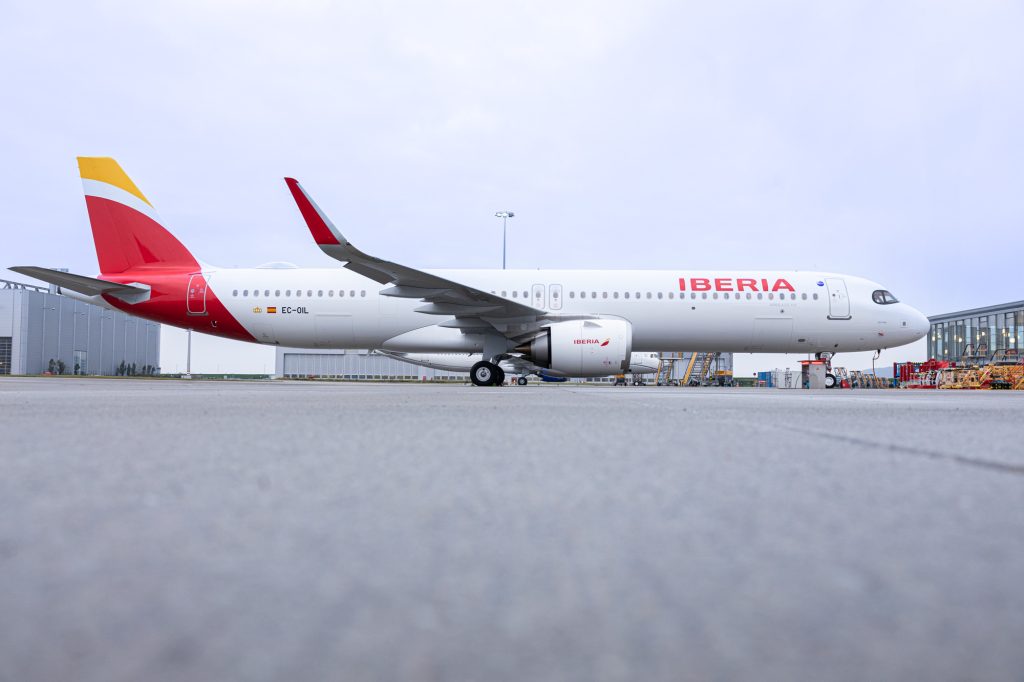Airbus and Boeing have been working to develop aircraft that can fly long-haul at the lowest price per passenger for decades, with different approaches taken by each company. In 2019, Airbus announced plans to develop a single-aisle airplane, the A321XLR, capable of flying 5,400 miles with up to 220 passengers, allowing airlines to operate long-haul flights of up to 10-11 hours. The A321XLR features an extra fuel tank added to the popular A321neo aircraft, enabling the increased range.
Iberia became the global launch customer of the A321XLR after a labor dispute delayed the roll-out with Aer Lingus. The airline configures the A321XLR with 14 business class seats and 168 economy seats, offering 30 inches of legroom and 18-inch width shoulder-to-shoulder in the economy cabin. The airline does not offer a premium economy cabin for this aircraft, with the chosen layout aimed at addressing the expected passenger mix on routes operated by the plane.
Skift boarded the first transatlantic flight from Madrid to Boston on the A321XLR and found the experience comfortable, with spacious overhead bins, large windows, and in-flight entertainment available. The inflight meals were delicious, but the single-aisle configuration showed limitations, especially with the reduced space for meals due to the Airbus Space-Flex solution. Airlines worldwide are examining the Iberia use-case to determine their own configurations and routes for the A321XLR, with around 25 carriers having ordered more than 500 planes so far.
Other airlines, such as Wizz Air, Qantas, United Airlines, Icelandair, IndiGo, and American Airlines, have confirmed orders for the A321XLR and are planning to use the jet on various routes and configurations. Wizz Air will configure the XLR with 239 seats in an all-economy configuration, United Airlines and Icelandair will replace their Boeing 757 aircraft with the XLR, and Qantas will use it to replace their Boeing 737-800s with a focus on domestic routes. IndiGo plans to use the A321XLR on routes from India to Europe, Africa, Western Australia, and Southeast Asia.
American Airlines expects to receive its first A321XLR delivery in 2025 and plans to operate them on cross-country routes initially, with potential expansion to Europe and Latin America in the future. Overall, airlines of all sizes are preparing to use the A321XLR to transform global route networks, offering greater point-to-point connectivity. While flying on a narrowbody aircraft for up to ten hours may be a shock for customers, the convenience and cost-effectiveness of the A321XLR are expected to outweigh any sacrifices in comfort. The A321XLR is poised to usher in a new era of long-haul air travel.















